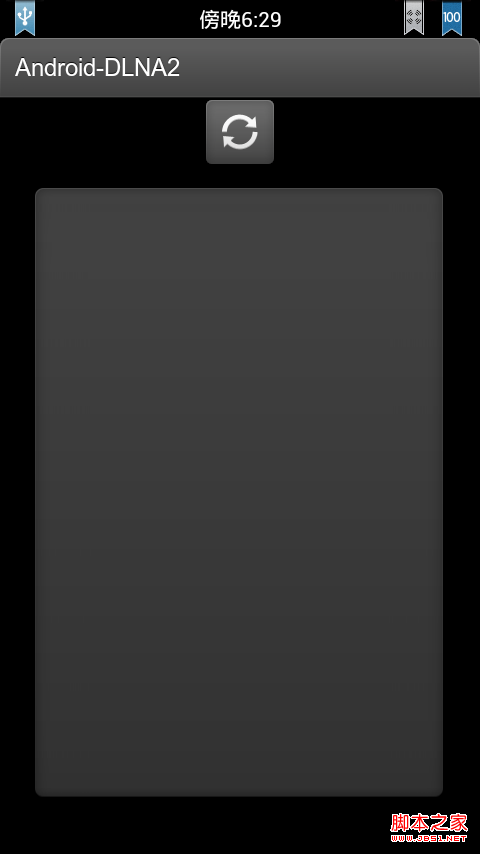編輯:Android開發實例
但是在實際應用開發中,通常橫屏(land)與豎屏(port)布局文件有所不同,這時候我們可以獨自定義橫屏與豎屏的布局文件( 文件名字要一樣),默認情況是加載layout目錄裡的布局文件。同樣應用還要支持不同的語言,如果我們應用裡沒有定義手機所用語言的資源時,會默認加載values的值。
要使程序適應布局,則需要添加以下兩個目錄:layout-land 和 layout-port ,系統在進行改變的時候,將會根據這兩個現在的屏幕的橫豎分別讀取這兩種不同的布局方式,如果這當前的不存在,則會根據layout中的布局進行布局。
下面是我的的三個布局:
layout:
代碼
<?xml version="1.0" encoding="utf-8"?>
<LinearLayout xmlns:android="http://schemas.android.com/apk/res/android"
android:orientation="vertical" android:layout_width="fill_parent"
android:layout_height="fill_parent">
<TextView android:layout_width="fill_parent" android:id="@+id/text1"
android:layout_height="wrap_content" android:text="@string/hello" />
<Button android:id="@+id/btn1" android:text="堅"
android:layout_width="fill_parent" android:layout_height="wrap_content">
</Button>
<Button android:id="@+id/btn2" android:text="橫"
android:layout_width="fill_parent" android:layout_height="wrap_content">
</Button>
</LinearLayout>
layout-land:
代碼
<?xml version="1.0" encoding="utf-8"?>
<LinearLayout xmlns:android="http://schemas.android.com/apk/res/android"
android:orientation="vertical" android:layout_width="fill_parent"
android:layout_height="fill_parent">
<TextView android:layout_width="fill_parent"
android:layout_height="wrap_content" android:text="橫屏顯示" />
<TextView android:layout_width="fill_parent" android:id="@+id/text1"
android:layout_height="wrap_content" android:text="@string/hello" />
<Button android:id="@+id/btn1" android:text="橫"
android:layout_width="fill_parent" android:layout_height="wrap_content">
</Button>
<Button android:id="@+id/btn2" android:text="豎"
android:layout_width="fill_parent" android:layout_height="wrap_content">
</Button>
</LinearLayout>
顯示效果:
layout-port:
代碼
<?xml version="1.0" encoding="utf-8"?>
<LinearLayout xmlns:android="http://schemas.android.com/apk/res/android"
android:orientation="vertical" android:layout_width="fill_parent"
android:layout_height="fill_parent">
<TextView android:layout_width="fill_parent"
android:layout_height="wrap_content" android:text="堅屏顯示" />
<TextView android:layout_width="fill_parent" android:id="@+id/text1"
android:layout_height="wrap_content" android:text="@string/hello" />
<Button android:id="@+id/btn1" android:text="橫"
android:layout_width="fill_parent" android:layout_height="wrap_content">
</Button>
<Button android:id="@+id/btn2" android:text="豎"
android:layout_width="fill_parent" android:layout_height="wrap_content">
</Button>
</LinearLayout>
顯示效果:
下面是對內容的顯示進行的國際化:
需要添加以下目錄:
values-zh-rCN 此下面放置的是顯示中文內容的
values-zh-rTW 此下顯示繁體中文
values-jp 顯示日文
一般形式為:values-國家編號
這些顯示將根據操作系統的語言進行讀取,如果不存在相應的語言版本,將會直接獲取values中的內容:
在此中,只對中文進行了設置
values中的內容如下:
<?xml version="1.0" encoding="utf-8"?>
<resources>
<string name="hello">Hello World, ShowTask!</string>
<string name="app_name">ShowTask</string>
</resources>
values-zh-rCN 中的內容如下:
<?xml version="1.0" encoding="utf-8"?>
<resources>
<string name="hello">此程序用於顯示任務!</string>
<string name="app_name">顯示任務</string>
</resources>
顯示效果如下:
參考文章:
http://www.fengfly.com/plus/view-194382-1.html
 android panellistview 圓角實現代碼
android panellistview 圓角實現代碼
(效果如上圖所示) 其實很簡單: 比方說上面的容器是一個ListView 代碼如下: <ListView android:id=@+id/listView
 Android本地化
Android本地化
Android應用程序可以在許多不同地區的許多設備上運行。為了使應用程序更具交互性,應用程序應該處理以適合應用程序將要使用的語言環境方面的文字,數字,文件等。在本章中,我
 Android本地化
Android本地化
Android應用程序可以在許多不同地區的許多設備上運行。為了使應用程序更具交互性,應用程序應該處理以適合應用程序將要使用的語言環境方面的文字,數字,文件等。在本章中,我
 unity3d發布apk在android虛擬機中運行的詳細步驟(unity3d導出android apk)
unity3d發布apk在android虛擬機中運行的詳細步驟(unity3d導出android apk)
unity3d發布apk在android虛擬機中運行的詳細步驟(unity3d導出android apk),總的流程分為以下6個步驟: 1、安裝java_jdk